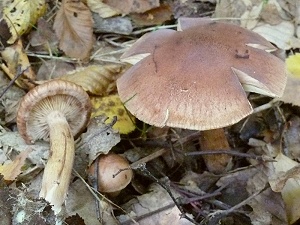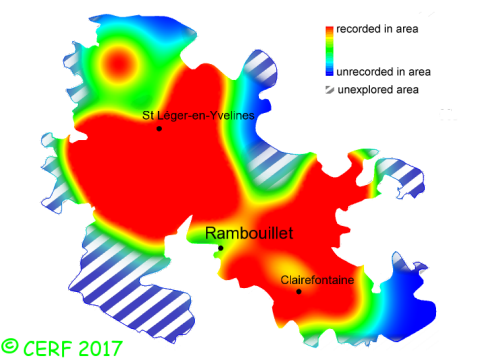| Tricholoma fulvum (DC.:Fr.) Sacc. |
|
|
|
|
|
|
The cap is brown to dark orange-red, convex then expanded, sometimes slightly depressed, sometimes slightly umbonate; its margin is smooth or clearly furrowed, especially in the youth. The cap surface is smooth, viscid to glutinous when damp. The stem is slender, fibrous, concolorous with cap but paler at the apex, with reddish fibrils on a yellowish background, slightly viscid in the youth, without ring. The flesh is white in the cap, yellow in the stem, unchanging; its taste is mealy and slightly bitter; the odour is mealy; its texture is fibrous. The gills are yellow then red orange, emarginate, crowded . The spore print is white. This species is mycorrhizal. It grows on the ground, in deciduous or mixed woodlands, on a rather acid soil, with birch most of the time, but also with spruce, poplar. The fruiting period takes place from July to November.
Chemical tests : none. Distinctive features : Brown to dark reddish-brown cap, with a roughly furrowed margin; flesh whitish in cap, but yellow in stem; yellow gills when young, then spotted with brown; mealy odour Tricholoma fulvum is occasional and very widely present in the forest of Rambouillet, and is frequent, more generally speaking . | ||
|
page updated on 14/01/18

